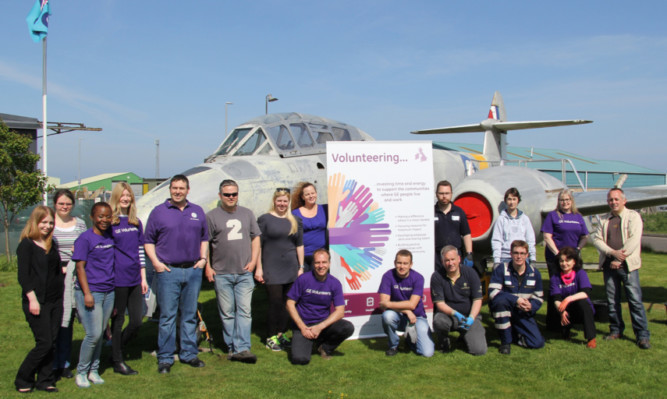One of the world’s oldest jet fighter planes has been brought back to life in Angus.
The Gloster Meteor T7, currently on display at the Montrose Air Station Heritage Centre, was in service with the No 603 (City of Edinburgh) Squadron.
It is on long-term loan from the squadron association and more than 20 volunteers from GE Oil and Gas have helped restore it to its former glory.
The first Meteor flew in 1944, with early models in squadron service during the height of the Second World War. Their speed meant they were able to shoot down the V-1 missiles fired at London in the conflict’s closing stages.
When it first arrived at the museum, the two-seater training version looked more like a “full-scale Airfix kit” than the formidable jet plane it once was.
Museum curator Dan Paton said: “When the aircraft arrived, I despaired at the prospect of what was essentially a pile of aviation junk ever being made to look like a real plane again.
“One of our members, Jim Underwood, who worked on Meteors in the RAF, got hold of a manual and, with the help of our other museum volunteers, reassembled the aircraft.
“The GE volunteers then came on board, helping us with the arduous and time-consuming task of rubbing down the old paintwork in order to prepare the Meteor for repainting.
“Once finished, the aircraft will be a wonderful sight for our visitors and is a great symbol of the contribution that local businesses can make.
“We’re very grateful for their help.”
Scott Wallace, an aviation enthusiast and manufacturing engineer at the GE Oil and Gas Brent Avenue site in Montrose, said: “This aircraft is one of limited numbers still in existence, so it’s exciting to think that we have had the opportunity to play a role in preserving it for future generations.
“As an engineer for one of the most high-tech industries in the world, it fascinates me to think that, through deploying new technology Rolls-Royce Derwent engines a version of the Meteor went on to capture the world air speed record in 1945. It’s details like that which are important in inspiring the next generation of engineers and it’s great that this aircraft will now be able to go on display for the enjoyment of the thousands of visitors who attend the Heritage Centre each year.”
Michael Ogilvie, a CNC machine operator with GE and a civilian instructor for the Air Training Corps, said it is always nice to give something back to the local community.
He said: “I’ve also had a keen interest in aviation for much of my life and this provided the opportunity to get up close and personal with an iconic aircraft, which is not something you get the chance to do every day.”
The Montrose Air Station Heritage Centre is run entirely by volunteers and has grown in size and reputation over the past few years, becoming an accredited museum and being awarded the Queen’s Award for Voluntary Service.
Recently, the centre was awarded a Heritage Lottery Grant for a project that will involve the construction of a replica BE2 aircraft a single-engine, two-seater biplane from the First World War.
Dr Paton said: “Building the BE2 will be an even bigger challenge than the Meteor and firms with large apprenticeship schemes or vast amounts of engineering expertise like GE Oil and Gas can make a valuable contribution to both the project and the continued success of the heritage centre.”
